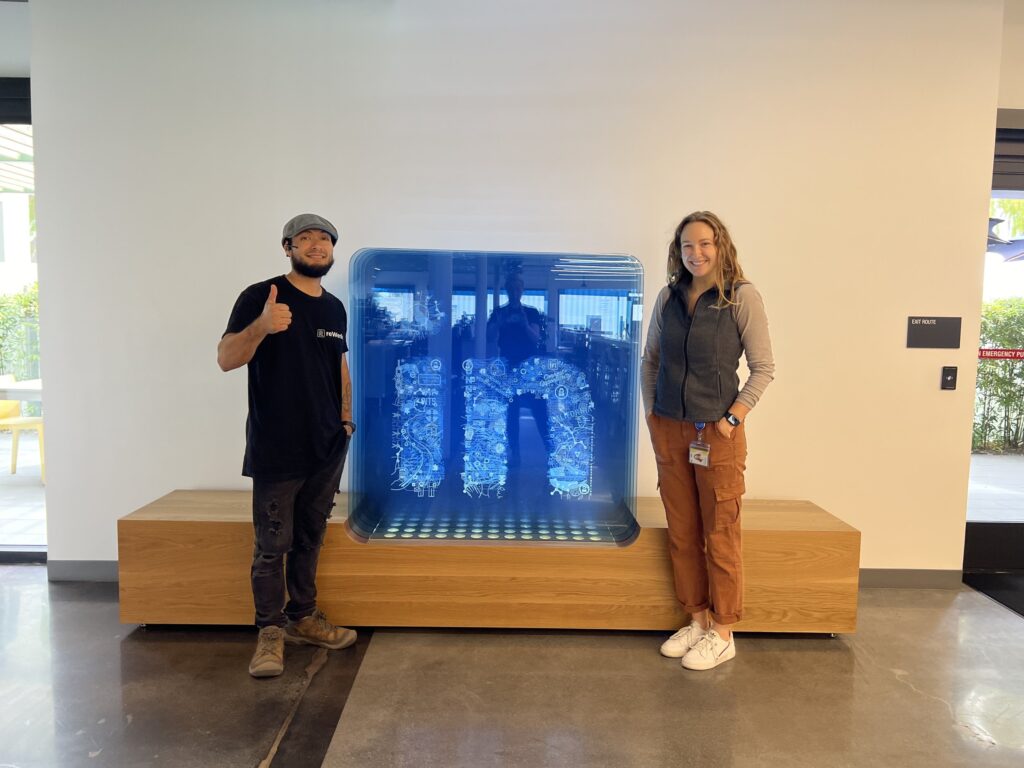The Materials Marketplace (MM), powered by Rheaply’s Resource Exchange platform, connects businesses and organizations to develop and scale new reuse and recycling market opportunities. Our program aims to create a collaborative network of businesses, organizations and entrepreneurs where one organization’s hard-to-recycle waste and by-products becomes another organization’s raw material. In addition to diverting waste from landfills, these recovery activities generate significant cost savings, energy savings, and create new jobs and business opportunities.
The Materials Marketplace was built to facilitate exchange between businesses, scale new reuse initiatives and develop new recycling market opportunities. At its peak, over 2,600 businesses and organizations were using the Materials Marketplace across North America, and to date diverted over 9,200 tons of material to higher and better use. Since some local political jurisdictions want to incentivize developers to use recycled materials in construction projects, the marketplace had five government entities subscribing to the site. Rheaply’s goal is to grow that to 50 cities by the end of 2024.
“They had a lot of clout in this space,” Rheaply CEO Dr. Garry Cooper said about the Council for Sustainable Development. “We had a lot of passion and a lot of product know-how, so I think it was just a really good match.”
Materials Marketplace users
Materials Marketplace users represent businesses and organizations at every stage of the circular economy – from collection and processing to manufacturers making new goods with recycled materials. The Materials Marketplace can be used as tool for companies to explore real-time data on waste and by-product materials and make decisions on infrastructure and process investments; or as a tool to help find new solutions for hard-to-recycle materials.
Recycling Sector: Recycling companies are using the Materials Marketplace to identify new customers and new buyers for collected/processed material. If you’re considering making a new infrastructure investment, opening up a service offering for a new material, or need to do additional research before accepting a customer material – use the Materials Marketplace to identify and test the appetite for specific end-markets before making any commitments.
Manufacturing Sector: Manufacturers can use the Materials Marketplace to find new solutions for challenging waste and by-product materials, and to source recycled feedstocks to help reach recycled content and sustainability goals. Transactions facilitated by the Materials Marketplace are measurable and tracked – in addition to diverting waste from landfill, these activities often generate significant cost savings, energy savings, and create new jobs and business opportunities.
Entrepreneurs: Entrepreneurs can use the Materials Marketplace to find suitable materials and innovate to build new reuse and recycling businesses. Access to resources and expertise from our state and city partners gives Marketplace users a unique connection to resources to explore new business opportunities in the reuse and recycling space. Let’s see what we can build together.
This Materials Marketplace platform brings together users from regional Materials Marketplace programs in Austin, Tennessee, Ohio, Ontario, Michigan and Washington – more regions will be coming online as we continue to grow. This hybrid approach allows our team to get deeply engaged with region-specific challenges and opportunities, and facilitate interaction at the national scale when appropriate.
Currently, creating an account on the Materials Marketplace is by invitation only. Please contact us directly at info@rheaply.com to learn about gaining access.


